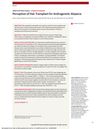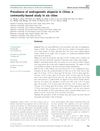Types of Hairline Recession in Androgenetic Alopecia and Perceptions of Aging in Asian Males
March 2019
in “
International Journal of Dermatology
”

TLDR Hairline recession makes Asian males look older, especially in mid-young age; proper hairline position can help them look younger.
The study investigated the effect of different types of hairline recession on perceived facial age (PFA) in East Asian males of different age groups. The results showed that hairline recession has a significant effect on PFA and accounts for the apparent old appearance of the face, especially in mid-young males. The study also emphasized the specific roles of different types of hairline recession in PFA and suggests that appropriate hairline position can significantly rejuvenate the appearance of males with alopecia.












